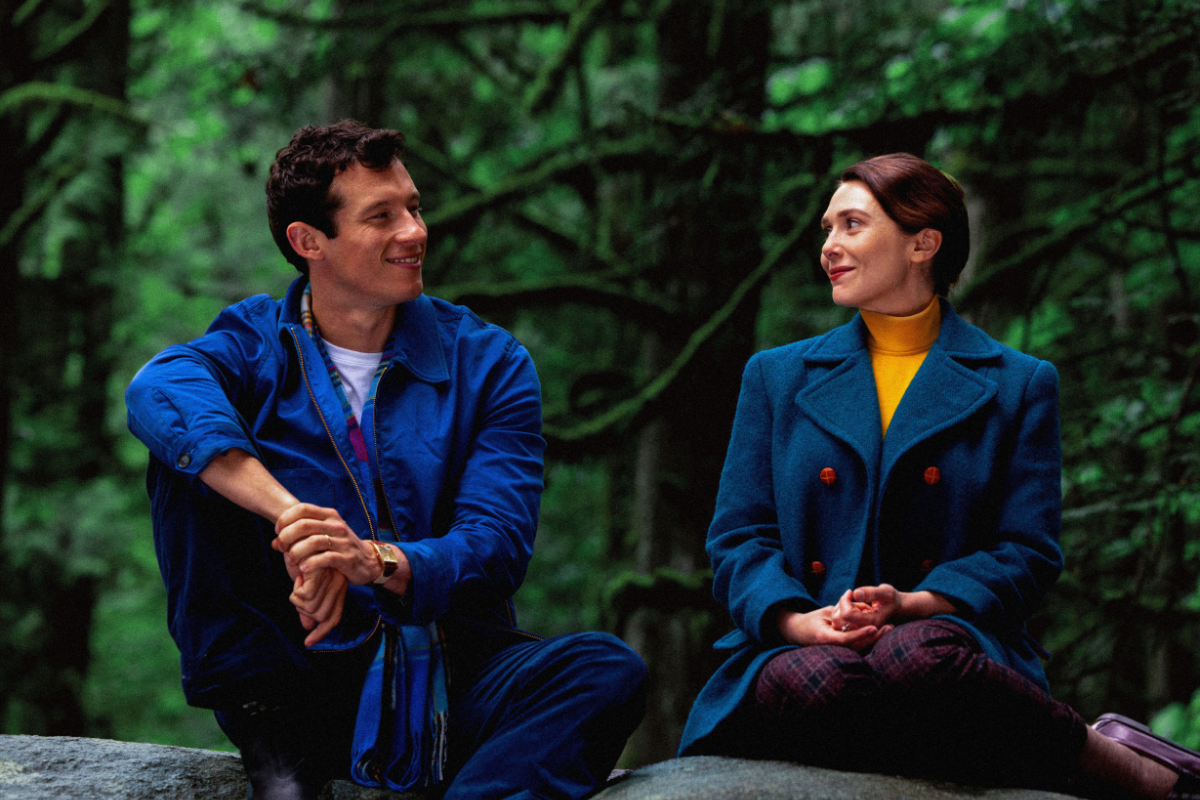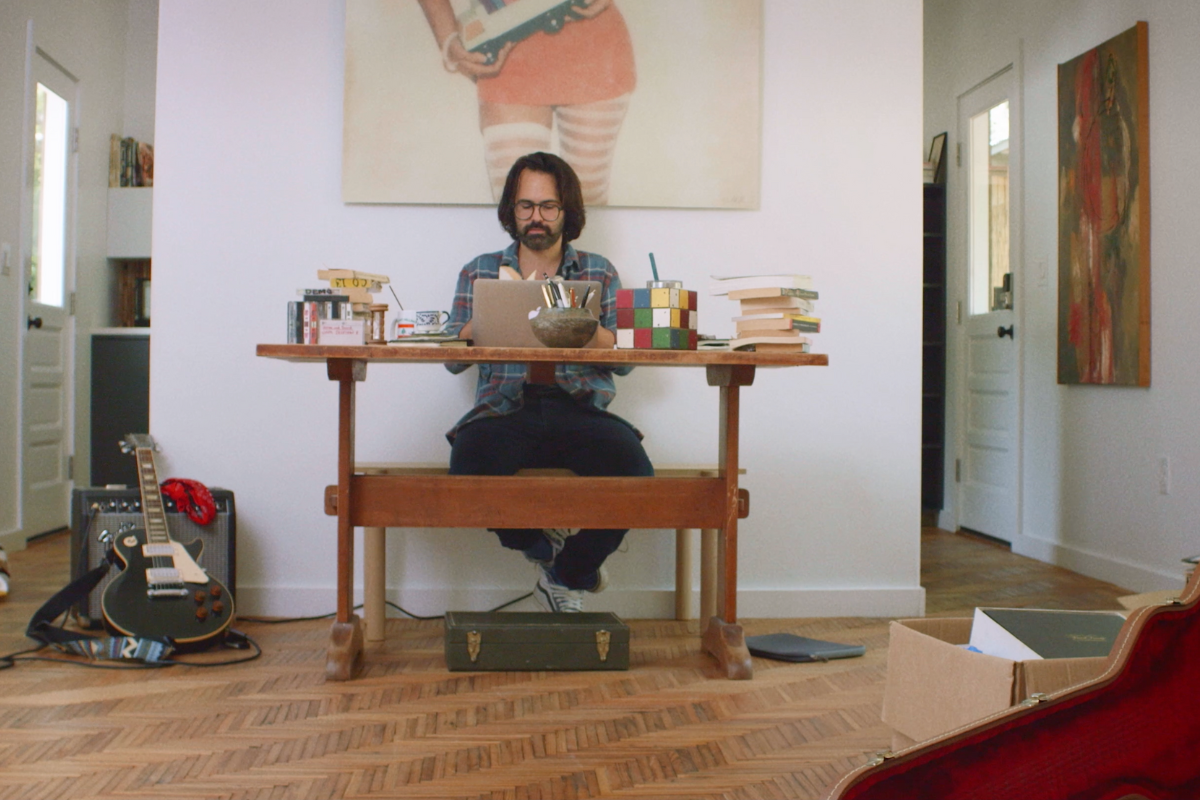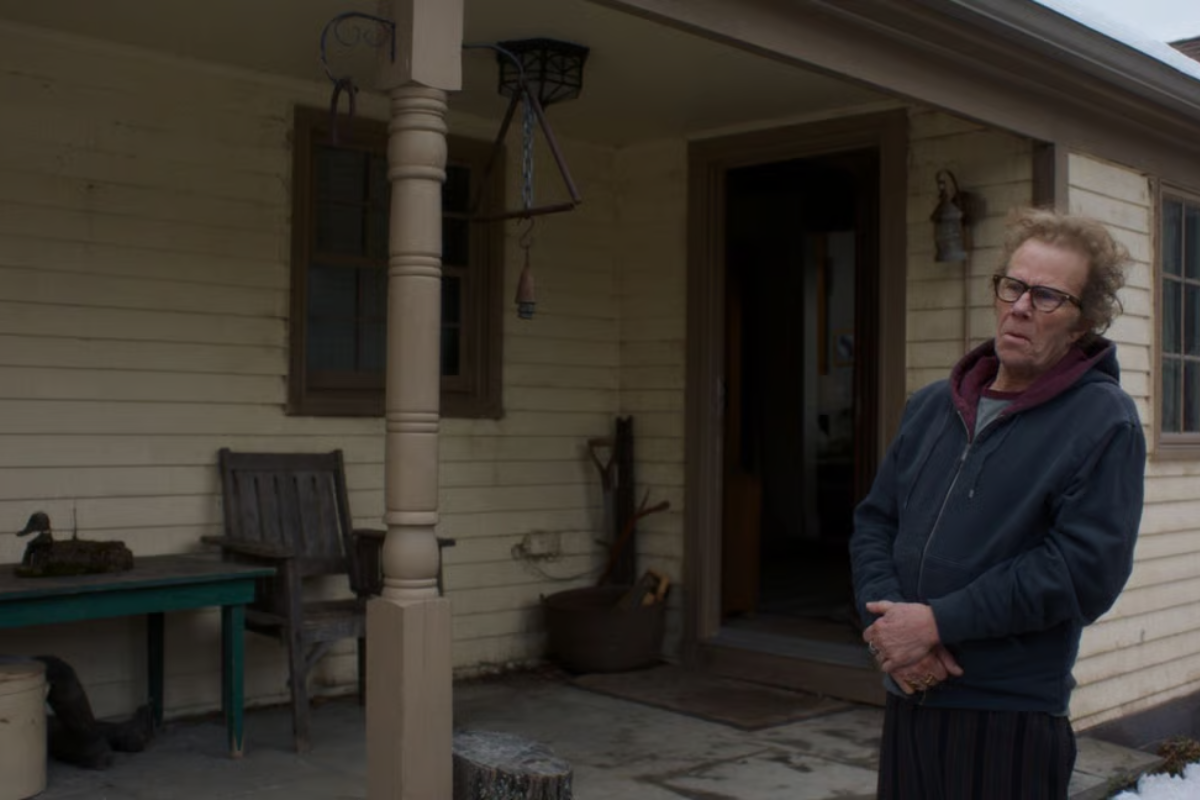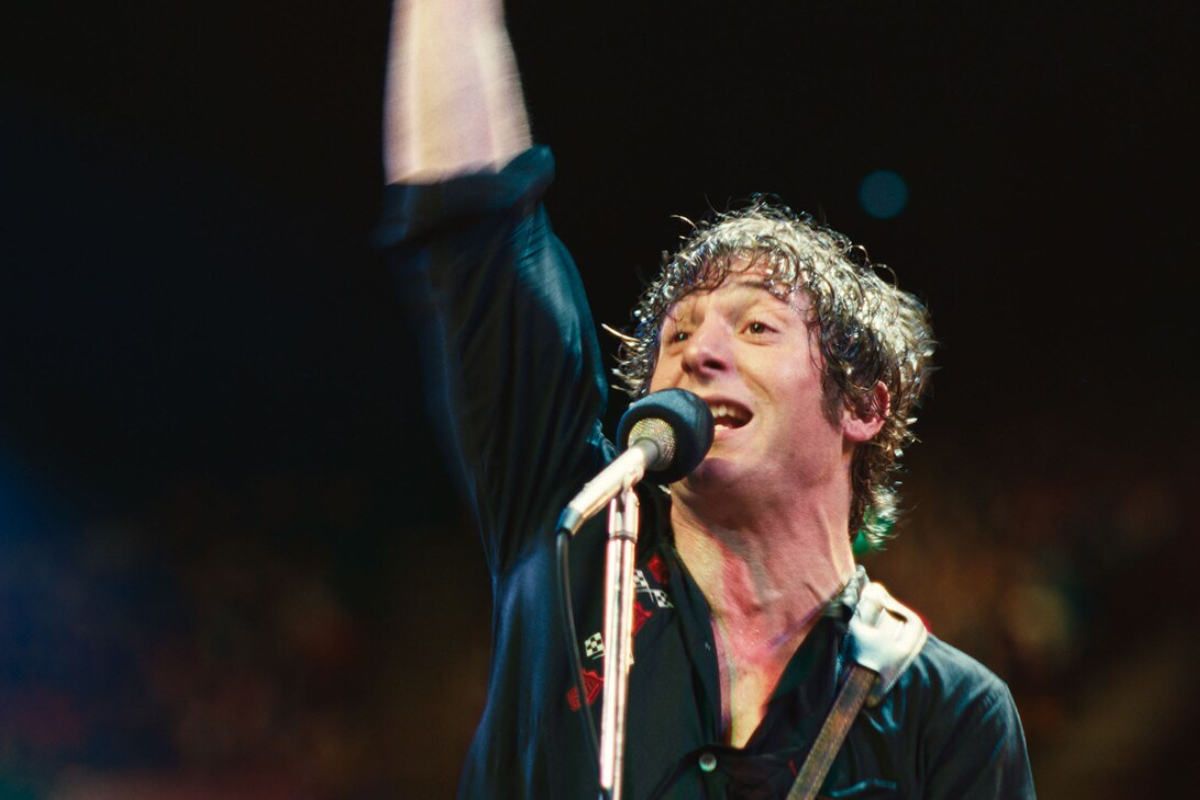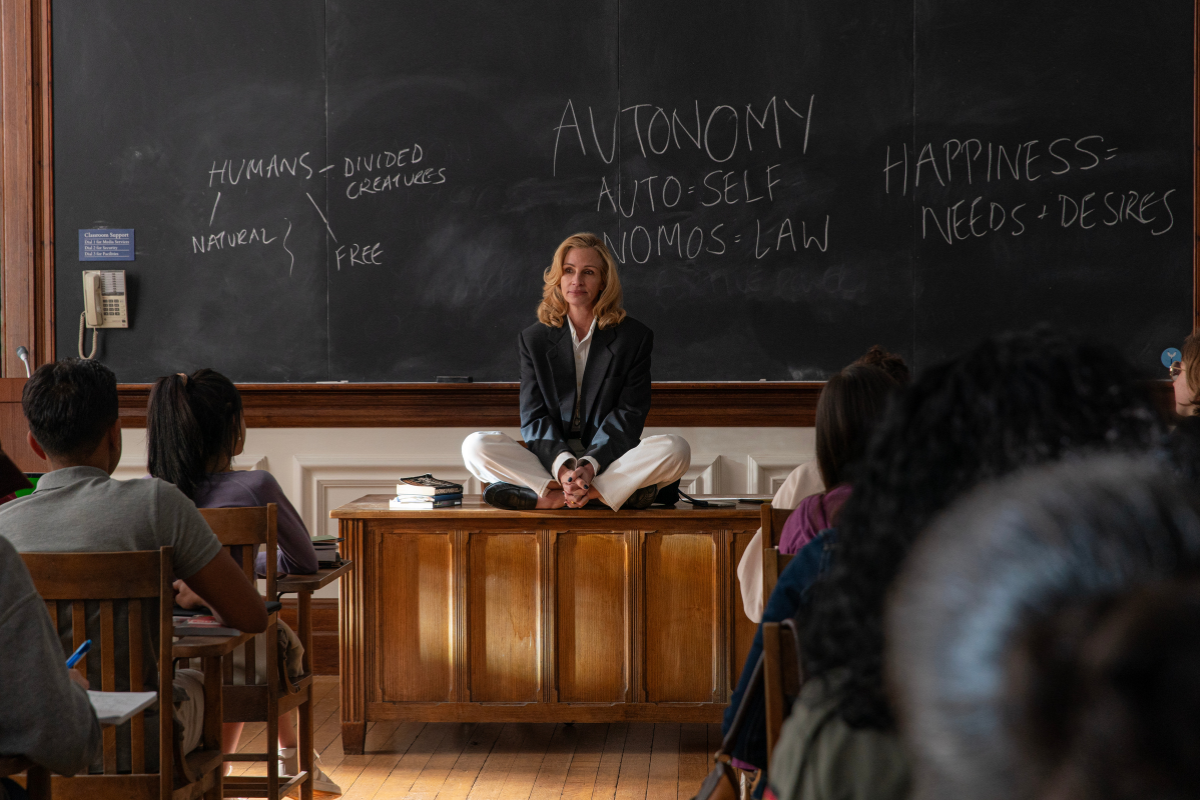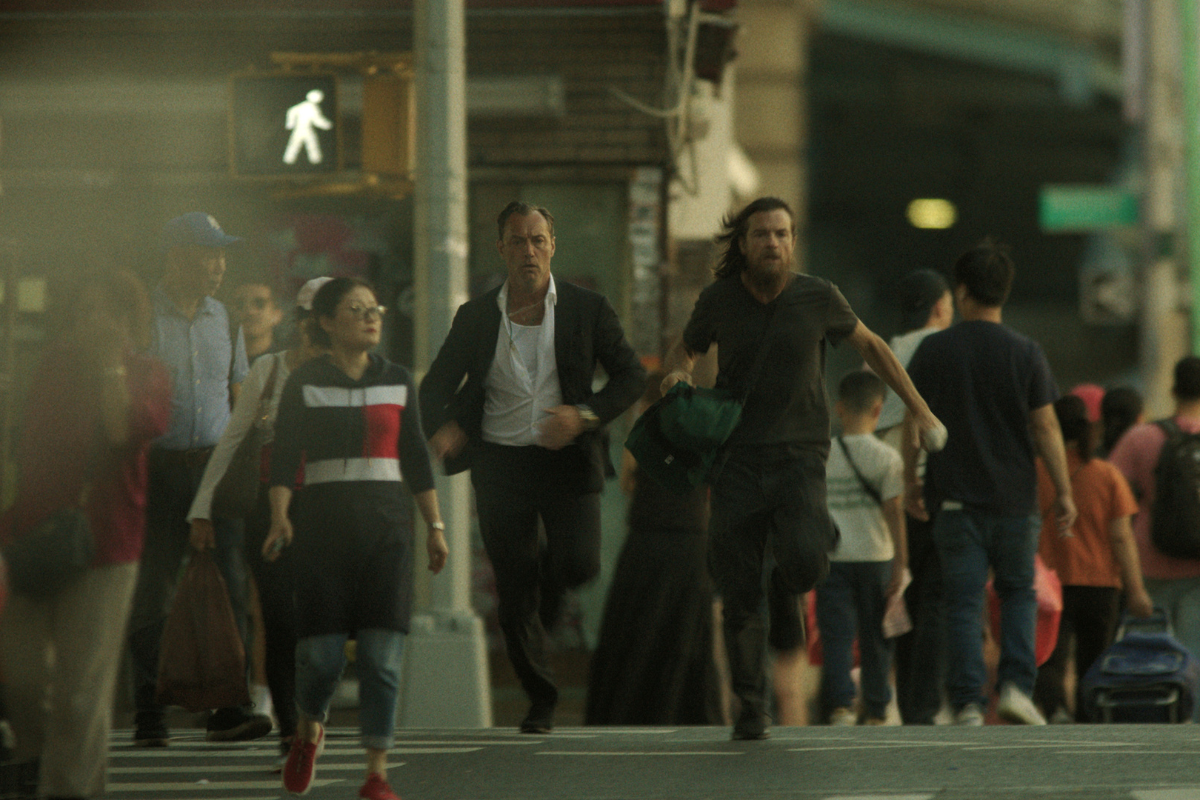INDIE SPOTLIGHT: Interview with ‘Sardinia’ Writer-Director Paul Kowalski
Paul Kowalski shares how the pandemic inspired his short film, embracing the challenges of low-budget filmmaking, tapping into the film’s tone and influences, and more.
About Sardinia: After an exotic bird arrives from Sardinia to a US port, a serious Polish-American man called Ryszard notices his work colleagues stricken with uncontrollable laughter – despite finding himself immune. With news arising that a contagion disrupting nerve signaling and causing fatal laughter is spreading around the globe, Ryszard tries his best to protect his unruly immigrant father and jovial wife, all the while trying to survive in an increasingly dystopian and glum society.
Coming off the heels of taking the 33rd Raindance Film Festival by storm, Paul Kowalski’s dark comedy short film Sardinia is perfectly him. Born in the UK to Polish immigrants, as a youngster, he had at one point lived on four continents within four years; he was constantly moving and, as he says, “having an identity crisis.” That crisis was averted, or perhaps purposely and properly fed after witnessing the burning of a straw effigy at the Guy Fawkes Night in England that inspired him to write an epically dark poem at the tender age of six, with one line prominently standing out, “I watched the guy burn and wondered if this could be me.”
Fast forward to the present day, that image is now the climax to a feature film he’s currently putting together (his feature directorial debut Paper Tiger won Best Narrative Feature at the Austin Film Festival and Fargo Film Festival) – but it also seems to be a constant thematic element for Paul as a storyteller and his filmic work.
As his voice as an artist evolves, regardless of the genre, he’s drawn to fish out of water stories, characters that feel like outsiders. And that is exactly what you get in his award-winning short film Sardinia. Paul spoke with Script about the inspiration for the short and universal connection, how the challenges of low-budget filmmaking can be embraced, tapping into the film’s tone and influences, and offers advice for filmmakers to continue making short films.
This interview has been edited for content and clarity.
Sadie Dean: How did you land on this idea and then find a way to frame it into a narrative, as you did?
Paul Kowalski: The genesis came primarily after making my first feature [Paper Tiger], years after AFI, sort of getting frustrated, because that happened during the pandemic, and I never even got to see. It won the Austin Film Festival. I couldn't even go. Everything was online. And as you probably know, trying to raise money for a feature takes so much time. So, I was just getting just really frustrated, and I knew I had to make something.
I was writing a lot, but as a director, I wanted to really put it to practice and make something. So, the first thing was, what can I do in a smaller frame that could test the boundaries and push the limits, which I think shorts are really good at doing - playing with a tone that maybe is a bit riskier or different?
In terms of the concept itself, a lot of it was obviously born out of the pandemic and just the horrors and the fever dream-like qualities of living in this bubble, and having every emotion pass through you, and seeing society so polarized and dystopic, and the fallout from it. And all the imagery which I sort of collected in my film, from the people in hazmat suits, lowering a body, which we saw, and people crying out from skyscrapers in Shanghai from lockdown - these images really stuck with me. And then just the feeling... I love psychological horror. And though this film is a bit more satirical, I think the experience of living through the pandemic did feel like that many times, like a fever dream... I still can't believe it happened, like looking back, 'Did we go through that?' Tonally, I wanted to play in that world. And I thought I didn't want to make something like a straight pandemic film on Zoom. I feel like that had been done quite a lot. It didn't really interest me, so I kind of just kept the idea in the back of my head.
And then I remembered another sort of experience I had on the tube, where I just saw a woman reading a book laughing, and the giggle just contagiously spread around the carriage. And I thought it was such an interesting phenomenon, because everyone was reacting differently. Some people were, like, horrified. Some people were really just letting themselves go. And it really kind of punctured this, quotidian everyday reality of humdrum commuting. So, I thought that's so interesting, just the act of laughter and people's reactions.
At some point, I guess there's two major ideas fused in my head, and I thought like, 'What if a virus spread through laughter? What if happiness could kill? What if a very glum, sad, Polish American immigrant was the one who needed to laugh more than anyone else, and he was the protagonist of a film caught up in a pandemic that spread through laughter?' So, I just slowly, kind of started like that.
Then I started to try to kind of balance the brain and the heart, meaning, take all these images and flip these experiences we went through with Covid, with instead of an alleged Wuhan bat, make it a cockatoo from Europe, from Sardinia that arrives. And instead of social distancing and masks, maybe we have people reading sad tales on the subway to prevent people being too happy and suppress happiness and promote a glumness. And people at work doling out depressants. Things that sort of could, I guess, intellectually, satirize the pandemic, but at the same time sort of have just a very simple story about a man who needs to laugh more than anyone, and whose life is falling apart around him. And I kind of drew from my Polish roots, so I made him a Polish American, sort of immigrant. His dad is in a Polish care home, which we shot here in Los Angeles, in an actual Polish retirement home, and that character was played by Olek Krupa, a really great Polish actor who's in a couple of Coen Brothers films.
Sadie: What’s so great about this movie is that it is so much of a human story, in that anyone can watch this anywhere in the world and immediately connect to it - fortunately and unfortunately at the same time.
Paul: It's insane to think that, how many people went through something similar, right? I'd say the whole world, but I'm sure there's parts of the world that felt relatively untouched for whatever reason. But I think, generally speaking, it's a very universal thing. And I think deeper than the pandemic itself, it's just really about loneliness, and there's a personal element of it, but there's a very social element, which we saw with the pandemic. Everything kind of was weaponized and meant something more than you know what it was, but I think at the heart of it was a lot of people stuck inside, dealing with themselves.
It was a very existential crisis for me personally, [laughs] and I guess for a lot of people. And I kind of wanted to capture that in the short amount of time I had. And to your earlier question about the genesis, I also wanted to play with the structure a bit, because I think a lot of people, when they make shorts, they try to squish in a feature, and it tends to be like a three-act structure, and I find that can work, especially with longer shorts. But my thing always from the beginning was, what if I do two days right on the cusp of the pandemic breaking, and then two days in the thick of it, when people are losing their minds? I felt like maybe I could compress the story in such a way where we're kind of mirroring two days right at the cusp of two big turning points of this guy's life, but also of the largest societal implications. It's really challenging, though, with a short I think, to do that and try to be innovative and not just sort of replicate a feature structure.
Sadie: Yeah, in terms of mapping this all out, were you cognizant of your budget? I’m curious just about that mindset from page to translating all of that visually.
Paul: It's a great question. I think as soon as you think about something global and societal, like a pandemic, you start thinking about how to represent that - the outside world. A lot of great shorts are really smart, clever ideas with three people in a room, which is really cheap and easy to shoot. This wasn't going to be that. I knew no matter how low budget it ended up being, I'd have to suggest the outside world somehow. And I think you can do that through a workplace. I think the kind of locations that we found, a high rise in Downtown LA, suggesting the scope… I think the opening, which is a bit cryptic, but represents the cockatoo arriving at a port, an industrial area. You're really suggesting as economically as possible, the outside world and the scope beyond the shore.
Yes, to your point, the first draft was sprawling, and I had this montage where I was going to set up a camera in like, hundreds of different locations and just film people laughing and perishing from excess laughter... and I just quickly thought like, yeah, that's wishful thinking. It's not going to happen on this one.
Of course, the budget dictates the approach. And as always, what I found is that it really helps the storytelling and focus the narrative. Limitations are actually one's friend, which is something I think any budget filmmaker will understand and sort of learn to embrace. Once I figured out what I could get away with, how I would suggest the outside world. The subway suggests commuting. It suggests the mode of transport.. But I think there's something iconic about a subway and the drudgery of the commute, which suggests, again, this thing interrupting everyone's daily routine.
And of course, I thought of this short quite some time ago, probably a couple years before I shot it, and I think it was just very, very slow pre-production on my own, trying to find the perfect subway car, negotiating and the perfect office space with cubicles. A lot of the pre-production enabled the vision, but it was a very, very, very slow process of me doing a lot on my own in terms of pre-production. It's probably typical for a lot of filmmakers in the indie realm.
Sadie: There's one shot that I really enjoyed, I don't know if it's on purpose or not, but it’s the second scene where Richard [Ryszard] is having breakfast with his wife, and it’s very much like that Citizen Kane montage scene and shot at the dining table, as the camera pulls back it reveals how separated the couple really are – both physically and emotionally. And in this case, it’s off the bat heartbreaking.
Paul: I love the way you picked up on that. Kelly Fallon was a production designer; we talked a lot about that space. Because, again, with shorts, like any filmmaking really, but specifically with shorts, there has to be such a quick shorthand and a lot of loaded subtext to get as much as you can out of each second of the film. The length of that table, and the fact that they're isolated up in this high-rise, I think you hit the nail on the head. I think that was all intentional. And then obviously we're trying to accelerate the narrative, to put the audience in the midst of this relationship that has long been dysfunctional. And he's basically saying, ‘Can you come around and see my dad? Because it's his birthday,’ and she quickly makes up an excuse, saying she has to go swimming with Susie. So, it's a bit ridiculous.
And the hard thing about that scene is it's the first sort of proper scene in the film between humans. And it's hard because you have to really establish a tone that's gonna exemplify the film without alienating the audience with, 'What's going on here? Is the acting bad?' But no, this is a satirical, almost like a Yorgos Lanthimos film, a lot of inspiration drawn from his films, like The Lobster, that kind of slightly stylized acting, where it's still grounded in reality, but it feels off. People are acting oddly, but their emotions are still fueling the film. That was always something that throughout every department, including with the actors, I tried to really not have anyone play towards the humor. I really wanted this to feel like a psychological horror film rather than a comedy. And I think it's probably somewhere in between - some kind of a dark satirical thing.
But I think part of the excitement for me as a filmmaker was trying to play with that tone, because it's such like on a nice edge. It just screened at Raindance in London, and I was so happy because enough time had passed finally where I could moderately enjoy seeing my work on the screen, you know. [laughs] But also half the audience were just sort of staring, confused or having weird emotions, and half were laughing, which I loved. It got me giddy with pleasure, because that was the intent of the tone.
Sadie: Having made a feature and recently jumping back into making a short film, any advice for indie filmmakers about maybe considering to continue to make short films even if they made a feature? Keep exercising those muscles as a storyteller…
Paul: That's a great question. I think shorts are more doable than features. I think if anyone wants to direct, you should direct as many shorts as you can. I think sometimes people write features who want to direct, and they write and they write, and they write, but they're not really exercising the directing muscle. So that's the first thing I'd say.
The second thing I'd say is that be aware of the format and the canvas you're playing on. War and Peace as a poem, how would you do that? What elements would you pull from it? Really think about the big idea, the unifying through line of the piece. I would also add that not all shorts are conflict-driven. In fact, some of the best ones aren't, which is what we're all taught drives narrative work... so I would say, think about how your shorts functioning.
And having seen 1000s of shorts in my life, I'd say the ones that stand out usually do something interesting with the format or the structure. Rarely is it just like, 'Oh, that was a great compressed three-act science fiction film.' It's like, 'Wow, what a twist!' or 'What an interesting way to present that information.' Something memorable about it that makes you stand out.
Not that all shorts should be calling cards, but I think if the plan is to apply to festivals and sort of make a splash, I think there's nothing wrong with asking yourself, how could you make it stand out, grab the audience. Don't just make a short as a proof of concept, or as a little teaser, or a scene from your film. I know people have done that. I think Damien Chazelle did exactly that with Whiplash. But also, that scene is an excellent scene, and it works as a standalone and it's gripping and it's exciting.
And I think the final point would be to help you stand out, do something that maybe only you could do. I tried to make this a very weird tone. A lot of people, if it's not for them, fine, but it stands out. It's odd. It's memorable. It's about a Polish American. It's a weird mix of Baroque music with this very claustrophobic, xenophobic feeling. So, it feels like me, and I think if you do something like that, you could be proud, no matter how it does in the festival circuit or if it ever gets made as a feature, you can say, 'Well, I'm figuring out who I am, and I'm exploring it with my art.' And that's really satisfying.
Sardinia will compete for the Octopus d'Or (Best Short Film) as well as for the Méliès d’Argent at the Strasbourg European Fantastic Film Festival starting September 26, 2025. The short film was longlisted for a 2025 Oscar after winning the Grand Prize Best Director at the Rhode Island film festival.
Watch Sardinia, an Omeleto selection, below.
Sadie Dean is the Editor of Script Magazine and writes the screenwriting column, Take Two, for Writer’s Digest print magazine. She is also the co-host of the Reckless Creatives podcast. Sadie is a writer and filmmaker based in Los Angeles, and received her Master of Fine Arts in Screenwriting from The American Film Institute. She has been serving the screenwriting community for nearly a decade by providing resources, contests, consulting, events, and education for writers across the globe. Sadie is an accomplished writer herself, in which she has been optioned, written on spec, and has had her work produced. Additionally, she was a 2nd rounder in the Sundance Screenwriting Lab and has been nominated for The Humanitas Prize for a TV spec with her writing partner. Sadie has also served as a Script Supervisor on projects for WB, TBS and AwesomenessTV, as well as many independent productions. She has also produced music videos, short films and a feature documentary. Sadie is also a proud member of Women in Film.
Follow Sadie and her musings on Twitter @SadieKDean


